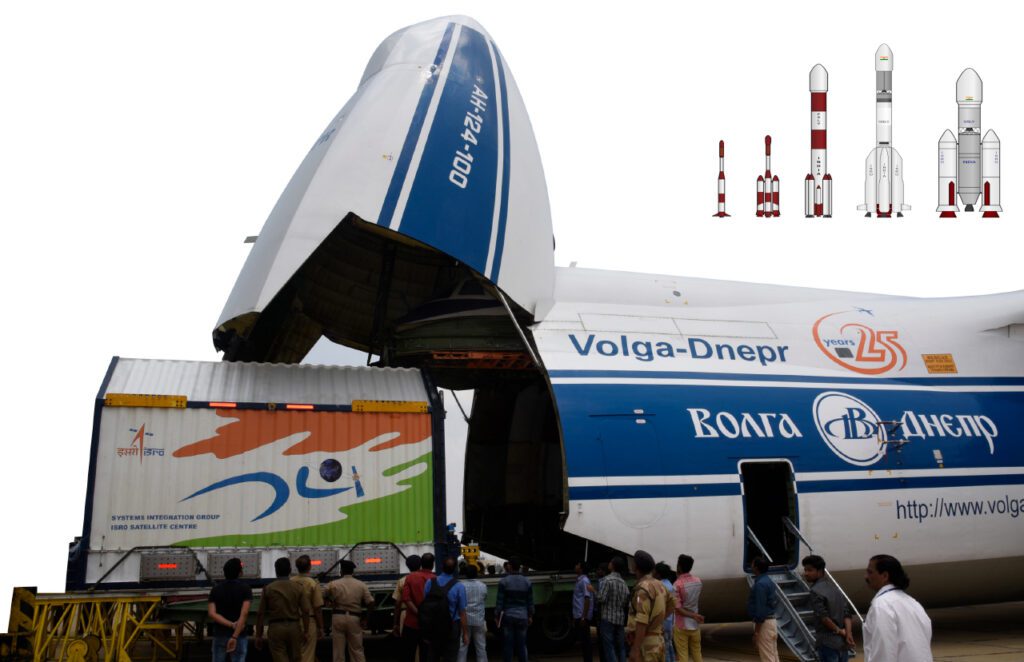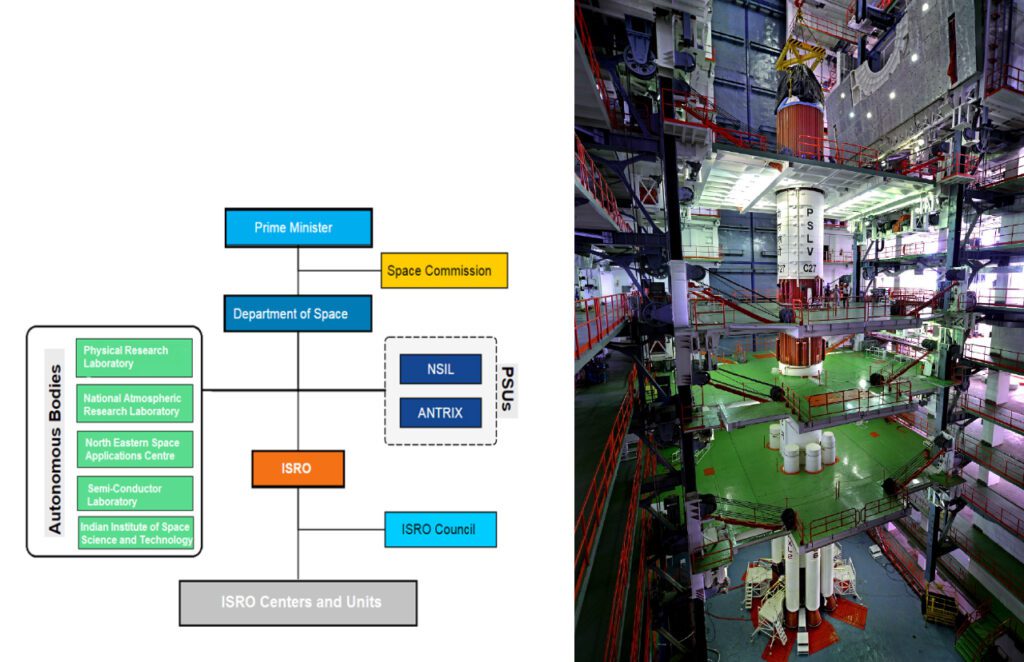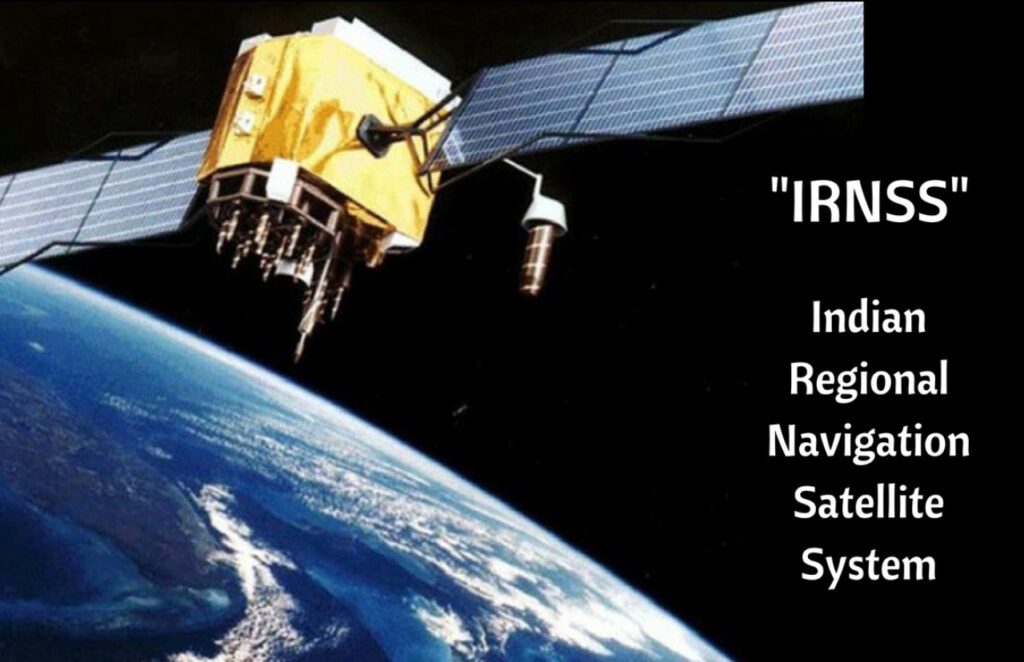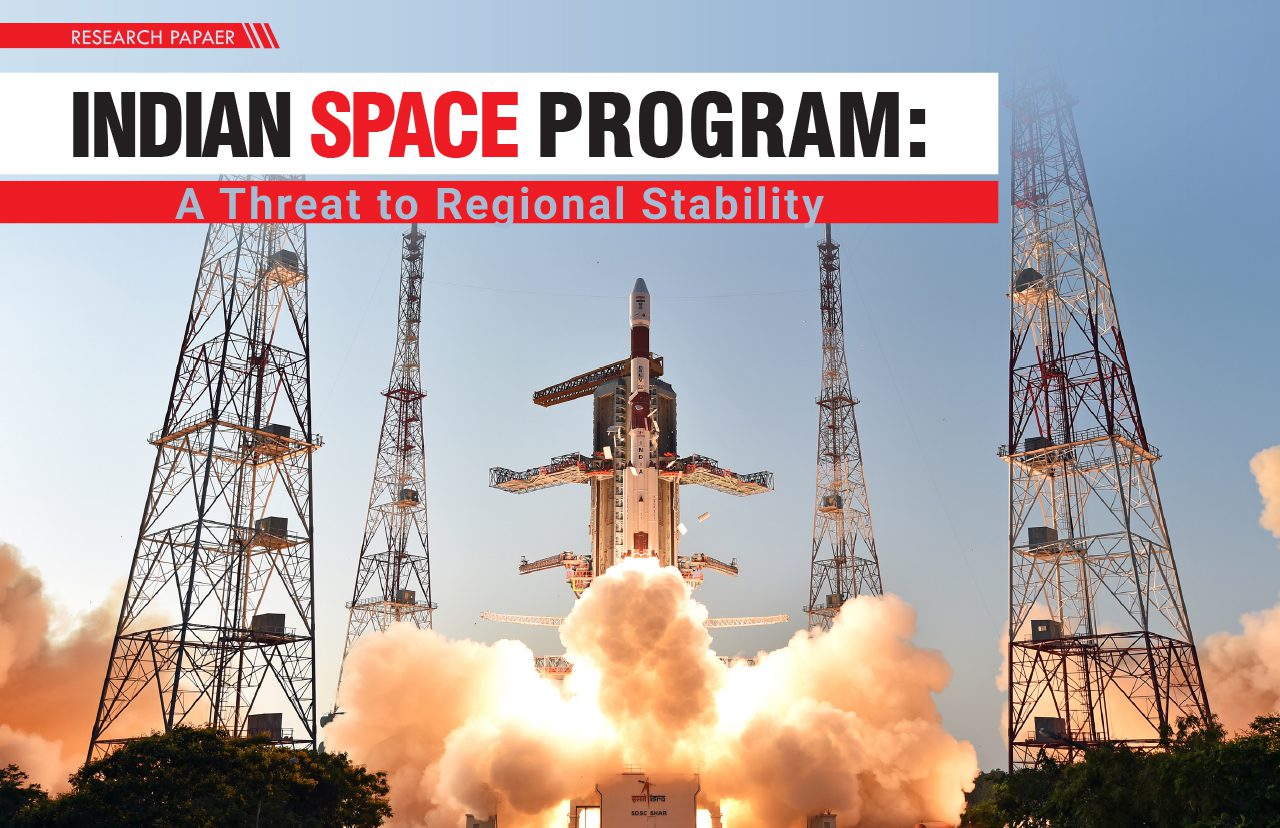India’s space program has evolved over decades into a formidable entity with a huge potential. However, with technology like the kinetic anti-satellite missile, which holds the ability to destroy small satellites in space, it has become increasingly clear that India won’t just stick to peaceful applications for its program. The Saffron giant has been peddling a soft image through its collaborations such as its satellite launching services. However, now, the truth is becoming clearer than ever that it is ready to dive headfirst into hardcore militarization. This is a dangerous foray which will disrupt the already out of control arms race in the region.
India’s space program is considered as one of the fastest growing space programs in the world. Especially, during the last three decades, it has evolved at a rapid pace. Incipiently, the purpose of India’s space program was to develop space-based technologies and infrastructure to bolster national development, for instance, the development of communication satellites to facilitate communication in remote areas, and the development of remote sensing satellites to provide necessary data and support to the agriculture sector of India. But as time went by, India started to shift the focus of its space activities from developmental purposes to space exploration and other distinct high-level missions including “Mangalyaan (Mars orbiter mission)” and “Chandaryaan (Moon landing mission)”.1 Besides, India also aspires to undertake its first crewed space flight mission in 2022, named “Gaganyaan”. Such ambitious missions will not only increase the magnitude and visibility of India’s space program but in the long run, the derivatives of these missions will enhance the scientific and technological base of the country in this domain.2
India has also been exploiting the dual-use potential of space technologies for its regional power ambitions, and shifting the utilization of its civil space assets for military purposes animatedly. By projecting its civil space program in front of the world through aforementioned prestigious space exploratory missions, India attracts cooperation and support from other advanced space-faring nations for its civil space program. However the services and technology acquired from foreign sources is being diverted to enhance its military space capabilities. Additionally, in March 2019, India has demonstrated its offensive counter-space capability by successfully testing its anti-satellite weapon that poses a grave threat to the peaceful uses of space by other countries in the region.3 This increase in militarization of India’s space program is highly destabilizing for the strategic equilibrium of the region and a major source of concern for Pakistan.
This paper peruses India’s space program, its existing civil and military space capabilities, the militarization of the program, and the implications for Pakistan.
India’s Space Program

India’s space program has undergone a rapid expansion in recent decades, largely as a result of the country’s growing economic power and influence. However, like its international peers, the history of India’s foray into space can be traced back much farther. India commenced its space program back in 1962. In its initial phase, India’s space program was a part of the Department of Atomic Energy (DAE). However, a separate body named the Indian Space Research Organization (ISRO) was constituted in 1969 to conduct research in this field and develop space-based technologies as well as their application. In 1972, the government of India set up a Space Commission and formed the Department of Space (DOS) to administer Indian space activities, and brought ISRO under its jurisdiction.
India formally set foot into outer space in 1975 by launching its first satellite named ‘Aryabhata’. Since then, India’s space program has grown significantly and now has become one of the largest national space programs in the world.4 India has launched 118 satellites of different types and roles, and according to the database of “Union of Concerned Scientists”, currently India has 49 operational satellites in outer space.5 Moreover, India has also developed its capabilities and ground stations to launch and operate satellites on its own.
Vision and Objectives of India’s Space Program
The principal objective of India’s space program, like other space faring nations, is to utilize space-based systems and their applications to fulfill national needs. However, ISRO has pronounced the vision of India’s space program i.e. “Harness space technology for national development, while pursuing space science research and planetary exploration.”
In order to achieve this vision, ISRO also has set some objectives:
Design and develop satellites for communication, navigation, earth observation, and space exploration
Design and develop advanced launching facilities
Promote the use of space technologies for societal and national development
Capacity building and education
Focus on Research and Development
Foster international cooperation6
Institutional Structure of India’s Space Program
The Prime Minister of India oversees India’s space program through a top body of professionals called Space Commission. Space Commission of India consists of eleven members and is headed by the Secretary of Department of Space (DOS). Other members include National Security Advisor to PM, Foreign Secretary, Principal Secretary to PM, Cabinet Secretary, space scientists, and technology experts.7
The Department of Space (DOS) of the Indian Government is responsible for managing and administering the various civil and commercial organizations, institutes and agencies associated with space activities and space-based technologies.8 There are two “Public Sector Undertaking (PSUs)”, named ANTRIX and New Space India Limited (NSIL), serve DOS for commercial space activities. The PSUs are corporations instituted by the Government of India for commercial projects that are not profit-oriented but serve country’s economy and national development.9
ISRO is the space agency of the Government of India that operates under DOS and responsible for the scientific and technological development of India’s space program. There are around fourteen centers, laboratories, educational institutes, facilities, and units with different roles and specifications who work under ISRO. (Figure 1)
India’s Existing Space Capabilities and Satellite Systems
India’s space-based capabilities and satellite systems are broadly classified into four categories: communication, earth observation, navigation, and satellite launching capability.
Communication
India maintains a vast satellite communication system with 15 operational satellites placed in the Geo-stationery satellites making it the largest satellite system in Asia-Pacific. The Indian National Satellite System (INSAT) was established in 1983 with the launch of INSAT-1. The INSAT series comprises the following in its series: INSAT-3A, 3C, 4A, 4B, 4CR. India’s GSAT series joined the constellation of the INSAT communication satellites comprising of GSAT-6, 7, 8, 9, 10, 12, 14, 15, 16, and 18. Furthermore, 200 signal-receiving units which are located in the Ku, C, extended C, and other frequency ranges serve in Television broadcasting, telecommunication, digital satellite newsgathering (DSNG), and search and rescue operations. Considering the tremendous potential offered by satellite communication for national development, ISRO has also undertaken some important initiatives regarding societal development, for instance, satellite-based disaster management systems, village resource centers (VRCs), Telemedicine, and Tele-education.12

Earth Observation
The Indian Remote Sensing (IRS) system is the world’s largest civil earth observation satellite system consisting of 13 earth observation satellites namely Resourcesat-1, 2, 2A CARTOSAT-1, 2, 2A, 2B, RISAT-1, and 2, OCEANSAT-2, Megha-Tropiques, SARAL, SCATSAT-1, INSAT-3D, Kalpana & INSAT 3A, INSAT -3DR. According to ISRO’s website, “the imaging sensors of earth observations satellites have been providing spatial resolution ranging from 1 km to better than 1m; repeat observation (temporal imaging) from 22 days to every 15 minutes and radiometric ranging from 7 bit to 12 bit, which has significantly helped in several applications at the national level.”13 The data acquired from these satellites play a crucial role in many sectors such as National Natural Resources Management System (NNRMS), urban planning, environment, forestry, agriculture, ocean resources, mineral prospecting, and disaster management. ISRO is also aiming to launch 10 more earth observation satellites in the year 2020 including the first Geo-imaging satellite.14
Navigation
ISRO has developed the “Indian Regional Navigation Satellite System (IRNSS)” which is an independent satellite-based navigation system. The IRNSS consists of a constellation of eight satellites, named NavIC (Navigation with Indian Constellation). It provides fairly good timing, positioning, and navigation services to the country as well as its neighborhood.15 The IRNSS provides accurate real-time location, navigation, and positioning services, and enables the Indian satellites to have access to critical information that the GPS does not provide them. India has also developed its “GPS Aided GEO Augmented Navigation (GAGAN)” that provides navigation services to civil aviation for better air traffic control.16
Satellite Launching Capability
India is not only capable of launching its own satellites in space but also providing satellite launching services to other countries. In 2017, it has made a world record by launching 104 satellites of several countries in a single launch. India has two satellite launch vehicles in use with operational supporting infrastructure: “Polar Satellite Launch Vehicle (PSLV) and Geosynchronous Satellite Launch Vehicle (GSLV).”17
Analysis of India’s Space Program
India’s space efforts, including exploratory missions to Mars and Moon, regional coverage of its indigenous navigation system, the launch of South Asia Satellite (GSAT-9) to provide assistance to the neighboring states in communication and meteorology, a world record launch of 104 satellites of different countries on cheaper rates, and its technological prowess in space, have significantly contributed to India’s soft power projection on the global strategic chessboard. Moreover, India has also been exploiting its accomplishments in the space domain as a tool of diplomacy in its bilateral as well as multilateral relations with other states. Resultantly, the soft power projection through space assists India in enhancing its international cooperation with developed states as well as increasing its influence on other states to achieve its national interests.
Military Dimension of India’s Space Program
Because of India’s aspirations to challenge China and assert itself as a global power, its space program has now been focusing more on military applications rather than civil developmental applications. On one hand, Indian experts associate this policy shift with their ASAT test, code-named “Mission Shakti”, undertaken in 2019, On the other hand, they claim that India had already acquired this capability in 2012.18 However, it is now fully evident that India’s space program is “increasingly militarized”.

India’s communication, remote sensing, and navigation satellites facilitate its armed forces to apply real-time knowledge, precision, and speed in warfare and strengthen their “Command, Control, Computers, Communications, and Intelligence, Surveillance, and Reconnaissance (C4ISR)” capabilities. Moreover, these satellite systems are also aiding Indian armed forces to develop their Network Centric Warfare (NCW) capabilities. Electronic warfare sensors and jammers are being integrated into the remote sensing satellites to enhance the capability and range of reconnaissance and monitoring activities. Apart from these dual-use satellite systems, Indian armed forces are keen to acquire dedicated military satellites to fulfill the C4ISR needs of each military service. For instance, GSAT-7 is a dedicated military communication satellite, developed by DRDO in 2013, which is providing communication services to the Indian Navy.19
Indian Air Force (IAF) already employs the data obtained from satellite systems for communication, navigation, ISR, and targeting. The IAF has been integrating space technologies widely in its “war fighting doctrines, conventional strategies, and operations”. IAF has plans to establish an “Aerospace Command” and get a dedicated satellite in the near future.20
Paradigm Shift from Space 1.0 to Space 2.0
Space 1.0 approach refers to “develop large, expensive, and complex satellites for both civil and military purposes”. While Space 2.0 approach refers to “commercial space activity centered on small, cheap, and many. A paradigm that is based around low-cost small satellite constellations.”21 The launch of 104 small satellites (smallsats) by a single launching vehicle marks a critical shift in India’s approach towards space-based systems, and it becomes evident that India has started pursuing the Space 2.0 approach. India has adopted Space 2.0, because, this approach enables quick mass production and low-cost solution in the design and manufacturing of smallsats. Moreover, it is difficult (near to impossible) to carry out a “decisive counter space attack” against a large number of smallsats in a constellation, in a military conflict. Therefore, with a constellation of smallsats, it is easier to recover the space-based services close to the pre-attack level.22
Threat to South Asian Strategic Stability
India’s increasingly militarized space program is posing a serious threat to the strategic stability of South Asia. Indian space-based capabilities along with ballistic missile defense (BMD), hypersonic and supersonic missiles, anti-radar weapons, enhanced UAVs and AWACS are giving India a false sense of security, and have hugely tilted the strategic balance of the region in India’s favor. India could detect Pakistan’s both conventional and strategic assets, especially, during deployment. India will also be able to detect and intercept conventional and strategic missiles and this capability will help India in the development of its indigenous ballistic missile defense system. The combination of space assets and stand-off weapons will give India the capability for precision engagement and enable it to think of counter-force operations against Pakistan, which will not only be detrimental to the deterrence stability of the region but also serves to the crisis instability in case of any post-Balakot like military crisis.
In March 2019, India has also demonstrated its kinetic anti-satellite capability by successfully testing a ground-based missile that destroyed one of its own satellites in space. This capability has enabled India to destroy adversary’s satellites and disrupt its satellite services in case of any military conflict. This act of weaponization of space by India has made its deterrence relationship with Pakistan even more complex, as termed as multi-domain deterrence. Moreover, the Indian ASAT test has created hundreds of debris in space that are still moving at a very high speed. As per the report by American technology news website ‘The Verge’, “If the debris were to collide with another satellite at such high speeds, it could do significant damage and potentially render a spacecraft inoperable.”23 Yet there have been no notable concerns shown by the international community regarding space congestion and pollution rendered by India.
Conclusion
India’s space program has marked significant growth during the last three decades, even with its limited resources. The program commenced with its focus on civil developmental projects but later on, it became “a symbol of national prestige and an element of soft and hard power”24 for India. India is fully exploiting the dual-use potential of space-based systems both for its economy as well as military. India’s progress in the space domain and its acquisition of the latest weapon systems have triggered a new arms race in the region as well as put a delicate strategic balance of power in South Asia in peril. Due to its fragile economy, Pakistan cannot compete with India in the development of space technologies and services. However, to maintain the strategic equilibrium in the region and to ensure its national security, Pakistan must enhance its international cooperation in the space domain, especially, cooperation with China and other friendly countries. At the same time, Pakistan should also focus on the development and indigenization of its national space program to reduce and ultimately avoid dependency on the space-based services provided by foreign actors.
References
1. Namrata Goswami and Peter Garretson, ‘Critical Shifts in India’s Outer Space Policy’, accessed 24 July 2020, https://thediplomat.com/2019/04/critical-shifts-in-indias-outer-space-policy/.
2. Rajeswari Pillai Rajagopalan, ‘India’s Space Program. International Competition’, n.d., 29.
3. ‘India’s ASAT Test | Pakistan Today’, accessed 25 July 2020, https://www.pakistantoday.com.pk/2019/04/29/indias-asat-test/.
4. ‘Genesis – ISRO’, Indian Space Research Organization ISRO, accessed 25 July 2020, https://www.isro.gov.in/about-isro/genesis.
5. ‘Satellite Database | Union of Concerned Scientists’, accessed 25 July 2020, https://www.ucsusa.org/resources/satellite-database.
6. ‘Vision and Mission Statements – ISRO’, accessed 8 August 2020, https://www.isro.gov.in/about-isro/vision-and-mission-statements.
7. ‘Organisation Structure – ISRO’, accessed 8 August 2020, https://www.isro.gov.in/about-isro/organisation-structure.
8. ‘Department Of Space’, 27 September 2014, https://web.archive.org/web/20140927110830/http://dos.gov.in/structure.aspx.
9. ‘PSU Full Form – Javatpoint’, www.javatpoint.com, accessed 8 August 2020, https://www.javatpoint.com/psu-full-form.
10. ‘Indian Space Research Organisation’, in Wikipedia, 6 August 2020, https://en.wikipedia.org/w/index.php?title=Indian_Space_Research_Organisation&oldid=971563228.
11. ‘Organisation Structure – ISRO’, accessed 8 August 2020, https://www.isro.gov.in/about-isro/organisation-structure.
12. ‘Communication Satellites’, Indian Space Research Organization ISRO, accessed 8 August 2020, https://www.isro.gov.in/spacecraft/communication-satellites.
13. ‘The Saga of Indian Remote Sensing Satellite System – ISRO’, Indian Space Research Organization ISRO, accessed 8 August 2020, https://www.isro.gov.in/saga-of-indian-remote-sensing-satellite-system.
14. Ibid
15. ‘Satellite Navigation – ISRO’, accessed 8 August 2020, https://www.isro.gov.in/spacecraft/satellite-navigation.
16. ‘GAGAN – Navipedia’, accessed 8 August 2020, https://gssc.esa.int/navipedia/index.php/GAGAN.
17. Samantha Mathewson February 15 and 2017, ‘India Launches Record-Breaking 104 Satellites on Single Rocket’, Space.com, accessed 8 August 2020, https://www.space.com/35709-india-rocket-launches-record-104-satellites.html.
18. Namrata Goswami and Peter Garretson, ‘Critical Shifts in India’s Outer Space Policy’, accessed 24 July 2020, https://thediplomat.com/2019/04/critical-shifts-in-indias-outer-space-policy/.
19. Sobia Paracha, ‘Military Dimensions of the Indian Space Program’, Astropolitics 11, no. 3 (1 September 2013): 156–86, https://doi.org/10.1080/14777622.2013.842453.
20. Staff Writer, ‘India To Set Up Aerospace Defence Command’, Space Daily, accessed 11 August 2020, https://www.spacedaily.com/reports/India_To_Set_Up_Aerospace_Defence_Command_999.html.
21. Malcolm Davis, ‘South Asia and Space Security’, 2019, https://doi.org/10.1080/14777622.2019.1578935.
22. Malcolm Davis, ‘South Asia and Space Security’, 2019, https://doi.org/10.1080/14777622.2019.1578935.
23. Loren Grush, ‘More than 50 Pieces of Debris Remain in Space after India Destroyed Its Own Satellite in March’, The Verge, 8 August 2019, https://www.theverge.com/2019/8/8/20754816/india-asat-test-mission-shakti-space-debris-tracking-air-force.
24. Sobia Paracha, ‘Military Dimensions of the Indian Space Program’, Astropolitics 11, no. 3 (1 September 2013): 156–86, https://doi.org/10.1080/14777622.2013.842453.








